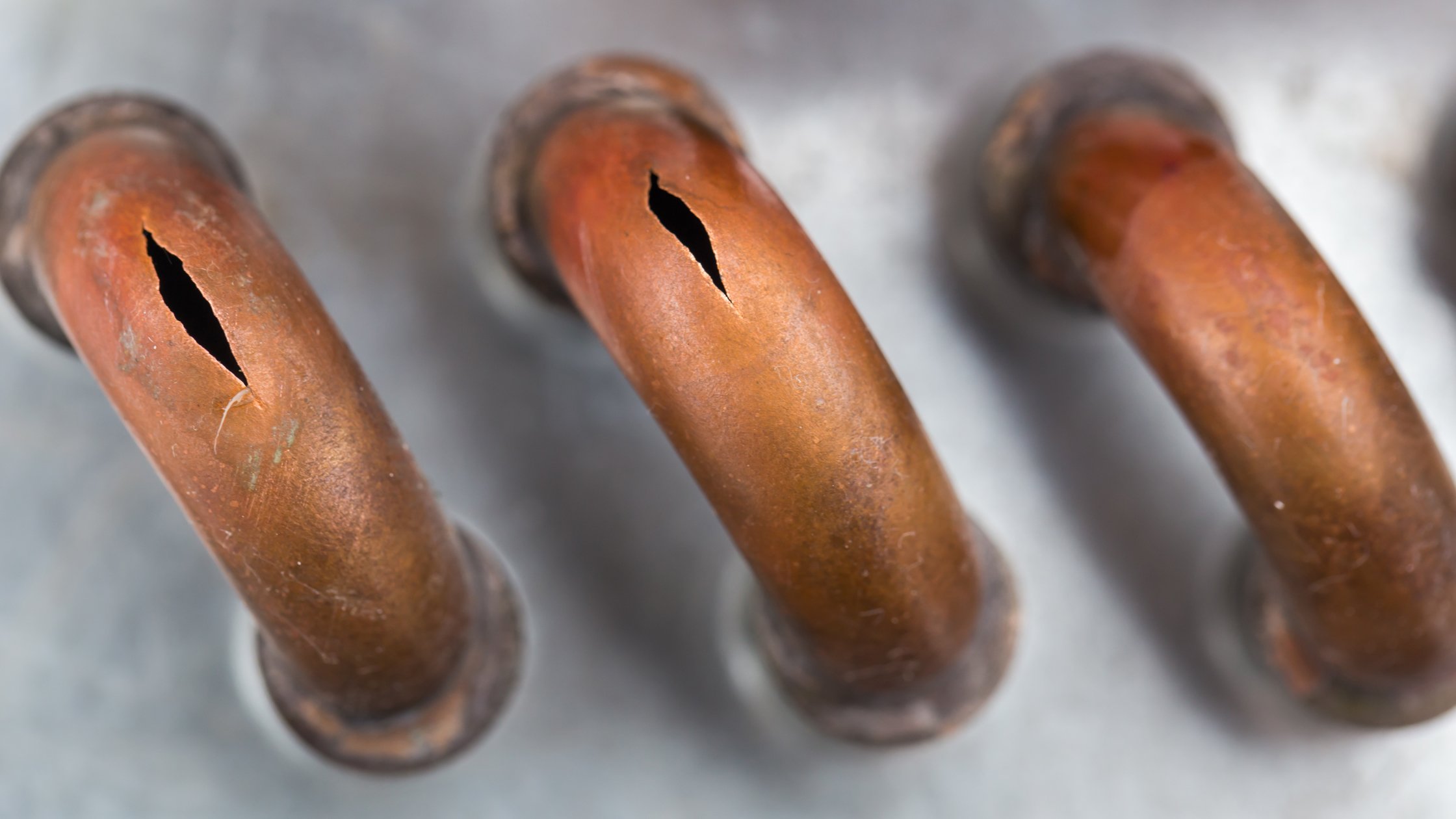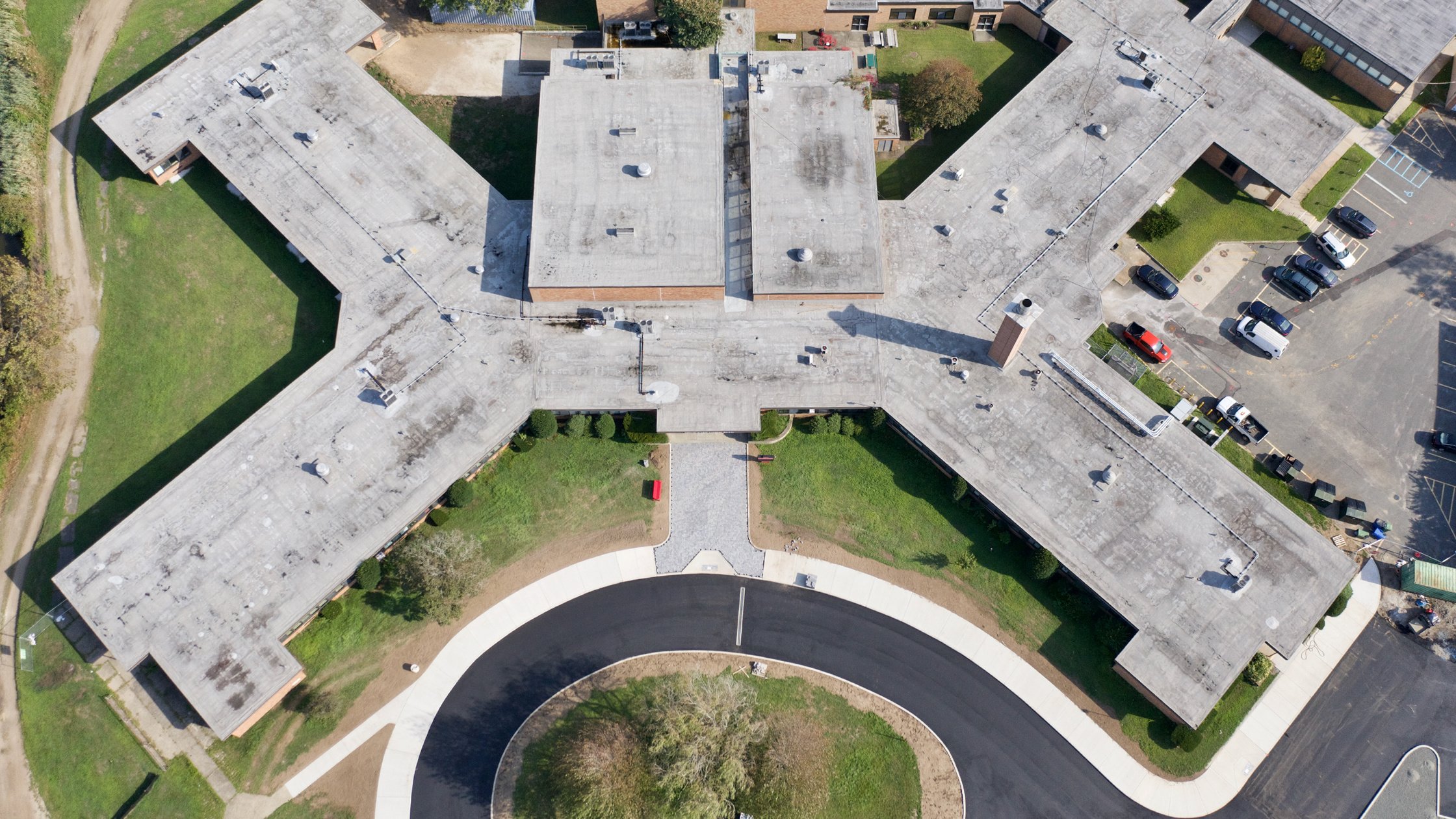Remember these best practices to help reduce the likelihood of frozen pipes and keep your school day running smoothly this winter.
The days are getting shorter, temperatures are dropping and the leaves are falling—meaning winter is right around the corner. With the changing of seasons, new risks will need your attention—and one you’ll really want to keep a close eye on are frozen pipes.
When pipes freeze, the aftermath can include significant property damage and costly repairs in addition to potential interruptions to your school day—and we’ve seen this firsthand. Matt Olphin, Director of Client Risk Solutions for Glatfelter Public Entities, states, “We have too many claims resulting from severe cold and freezing. It doesn’t matter where you call home—it seems like all parts of the country are experiencing severe weather that includes freeze events. Just look at Texas and the historical freeze event that occurred in 2021. Preparation is key—ask “what if” questions, run through response scenarios, make plans to address emergencies, practice and keep those plans up to date.”
It’s important to take this risk seriously and take precautionary measures to help prevent pipe freeze—if not, your school could face devastating outcomes similar to these:
Spokane, Washington Elementary School
In December 2022, while students were out on winter break, Stevens elementary school had two frozen pipes burst—causing damage to multiple kindergarten classrooms. Books, supplies and furniture worth thousands of teacher-invested dollars were destroyed. In addition to the significant damage done to teacher belongings, drywall in the classrooms had to be taken out.
Thankfully, the community was able to band together to help with recovery and work towards replacing these classroom staples—with local coffee stands raising money for the teachers and a few community members giving cash donations.
Baltimore City Schools
Frederick Douglass High School and Digital Harbor High School closed their doors in January after frozen pipes burst and caused flooding. The schools faced serious damage and had to send over 1,000 students back to virtual learning until renovations were made.
Unfortunately, these weren’t the only two schools impacted due to frozen pipes and coils. School officials stated that 15 to 20 other schools throughout the district experienced minor flooding. Douglass suffered the most damage with an entire wing of the building being declared off limits and remained virtual for weeks.
With the tremendous task of supporting and ensuring a brighter future for your students, you don’t want to have to worry about issues that could’ve been avoided. Luckily, there are steps you can take to help reduce the likelihood of this happening at your school. Keep these 15 best practices in mind to help minimize the risk of frozen pipes this winter:
- Heat – maintain heating systems to normal levels throughout buildings.
- Insulation + Pipe Heating – insulate pipes, and when providing heat tracing for pipes, make sure it’s approved by a Nationally Recognized Testing Laboratory (NRTL) such as FM or UL.
- Emergency Power – to provide continuous power to pipe specific heat tracing, make sure emergency power supplies are operational, regularly exercised and tested under full load, and supply power to areas that require heat.
- Shut Off + Drain – shut off water and drain water from all systems in areas where you know there would be an issue or no heat.
- Sensors – to determine if temperature and water sensors can be added where problems have occurred, or in main supply areas, work with your current fire and security alarm providers.
- Valves – provide signage for the location of all water shut off valves so staff can quickly shut off water and reduce water damage in the event of a pipe break.
- Concealed spaces, attics + crawl spaces – identify all of these areas and assess for pipes and vulnerability to freezing.
- Windows – conduct window checks at the end of each day, and communicate with staff to ensure windows are tightly closed when severe cold weather is expected
- Preventative Maintenance (PM) – include these preventative measures in your PM program to help make sure these items are reviewed and addressed if needed.
- Fire Protection Rooms – all windows, doors and venting louvers in these areas should be functional, closed and in good condition. Ensure heating sources are functioning as well.
- Wet Sprinkler Systems – heat for wet pipe sprinkler piping areas should be sufficient. If needed, provide approved supplemental heating.
- Dry Sprinkler Systems – low points and drains in dry sprinkler systems should be drained of water and condensation.
- Fire Pumps – check test header pipes to make sure all water is drained.
- Unoccupied and Vacant Buildings – these best practices should be applied to buildings not being used on a regular basis as well. Routine self-inspections to check on their condition will be important.
- Training – provide regular training on all of the above to the Buildings + Grounds staff. Consider this for all employees as well.
Don’t overlook the impact winter weather can have on your buildings. As cold weather approaches, pipe freeze can be a serious threat to your school, so be prepared and take these precautionary measures to help minimize your risk and the costly aftermath.

Richie Almeida, Integrated Marketing Specialist
Richie is an avid movie goer with an addiction to Sour Patch Kids. If he isn’t at the movies, he is at the gym or on a hike trying to make up for his bad eating habits.
DISCLAIMER
The information contained in this blog post is intended for educational purposes only and is not intended to replace expert advice in connection with the topics presented. Glatfelter specifically disclaims any liability for any act or omission by any person or entity in connection with the preparation, use or implementation of plans, principles, concepts or information contained in this publication.
Glatfelter does not make any representation or warranty, expressed or implied, with respect to the results obtained by the use, adherence or implementation of the material contained in this publication. The implementation of the plans, principles, concepts or materials contained in this publication is not a guarantee that you will achieve a certain desired result. It is strongly recommended that you consult with a professional advisor, architect or other expert prior to the implementation of plans, principles, concepts or materials contained in this publication.
This blog post may contain the content of third parties and links to third party websites. Third party content and websites are owned and operated by an independent party over which Glatfelter has no control. Glatfelter makes no representation, warranty, or guarantee as to the accuracy, completeness, timeliness or reliability of any third party content. References to third party services, processes, products, or other information does not constitute or imply any endorsement, sponsorship or recommendation by Glatfelter, unless expressly stated otherwise.
Related posts
Help ensure your school's roof is protected against seasonal risks by prioritizing inspections and preventative maintenance.
How you can help protect your most important asset: your people, and how to help them set up their insurance benefits so that they reflect their wishes.






Submit a Comment